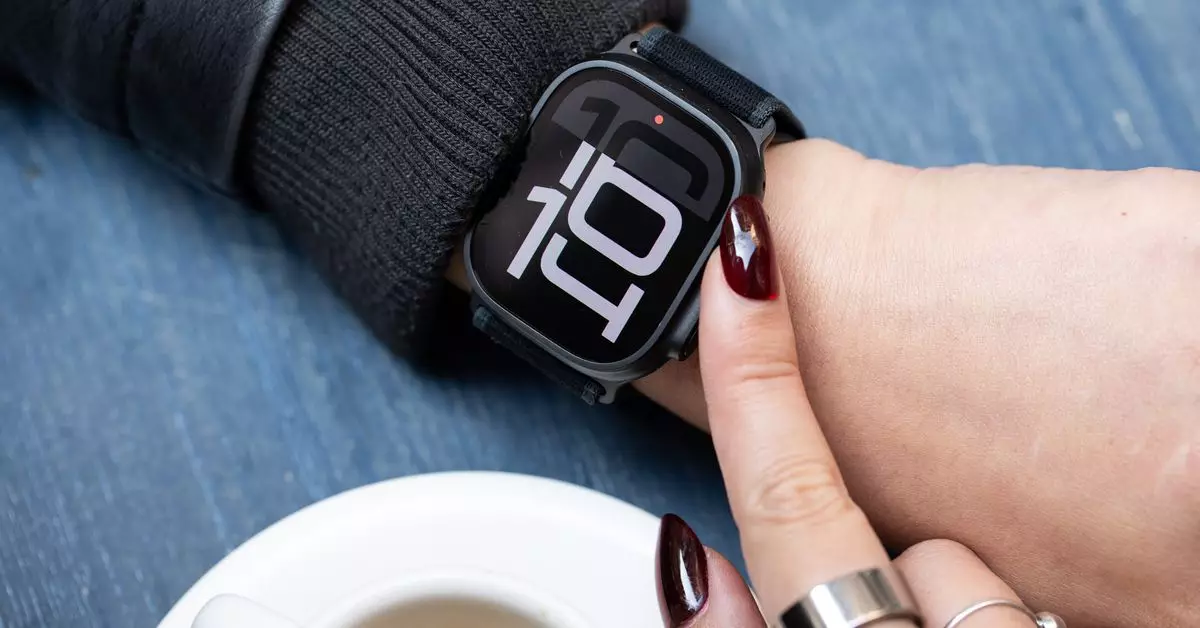In the ever-evolving landscape of technology, it’s not uncommon for companies to release devices that seem, on the surface, to be revolutionary, only to discover they are little more than variations of existing models. The recent release of the black Apple Watch Ultra 2 exemplifies this phenomenon: while it boasts a new color, it offers no groundbreaking features beyond what its predecessor delivers. Priced at $800, investing in the black variant appears slightly absurd for anyone who already owns the standard Ultra 2. The appeal here is superficial, rooted more in aesthetics than functionality.
Yet, let’s dissect the emotional undertones of this desire for the black Apple Watch Ultra 2. There’s something undeniably enticing about its sleek, dark exterior—it radiates a certain power and sophistication. It’s a tool that transforms one’s presence; donning it feels like stepping into a character from a noir film, complete with a mysterious flair. It invites thoughts of elegance and allure that go far beyond its capabilities. That sense of empowerment instills a spirit of confidence, allowing the wearer to embrace a persona that transcends the mundane realities of everyday life.
For many, the black watch becomes more than a mere accessory; it morphs into a statement piece, reshaping how one views themselves in relation to their world. In those moments when we slip it on, it’s hard not to feel like we wield a significant edge, akin to a superhero cloaked in dark tones, equipped for adventures yet to unfold.
Interestingly, this fixation on color goes beyond vanity; it speaks to a deeper psychological resonance with our gadgets. Why does the black variant evoke feelings of excitement and intensity, while a different shade can spark irritation? Psychological studies have long suggested that colors greatly affect our emotions—they can uplift us, calm us, or stir nostalgia long forgotten. The struggle between the delight of a vibrant pink versus the dreary weight of muted tones might sound trivial, but these reactions tap directly into our emotional architecture.
It’s this emotional connection that fuels our obsession with product aesthetics. When a tool, meant to assist us in everyday tasks, becomes a source of joy and inspiration, it leads us to cherish it on a much deeper level. Life’s challenges can often seem insurmountable, and finding joy in small things like color and design can provide a much-needed respite from reality.
The allure of the black Apple Watch Ultra 2 transcends logical reasoning into a more instinctual seasonal desire. Even as rational thinkers, we do ourselves a disservice when we dismiss the experiential value that the right product can offer. The satisfaction gleaned from owning an aesthetically pleasing item, one that harmonizes with our personal tastes, often outweighs the rational costs associated with it.
One does not just purchase technology to use it—it becomes a part of our identity, woven into the stories we tell about ourselves. Although the black watch may perform on par with its silver counterpart, it imbues moments of mundane interactions with vibrance and flair. Whether it’s exchanging glances at a coffee shop or drawing compliments from colleagues, the small boost to our social currency can feel remarkably rewarding.
Amidst this whirlwind of desire, however, lies the bittersweet pang of temptation every tech enthusiast grapples with. We can often find ourselves ensnared in a loop of desire that tends to eclipse our original, more reasoned intentions. Friends and coworkers may express envy or curiosity, leading to those murmurings of thoughts like, “Should I give in to the temptation?” The answer, while clear in our minds, becomes fogged by the communal allure of innovation.
The tension between desire and practicality is palpable. We wonder if indulging ourselves in aesthetic frivolity makes us appear vain or frivolous. Yet, aren’t those very emotions what make life enjoyable? Ultimately, the decision to purchase becomes less about need and more about the thrill of aesthetic experiences—a fleeting sense of pleasure that can soften the edges of our fractured realities.
In a world where functionality often reigns supreme, the appeal of an aesthetically driven choice can revitalizing. When it comes to gadgets, it’s crucial to recognize that not every decision needs to stem solely from practical reasoning; sometimes, indulging in color and design allows us to reclaim joy. While the black Apple Watch Ultra 2 may offer nothing revolutionary in terms of performance, its value resides in the emotional resonance it creates—an object that allows us to embrace our individuality amidst the chaos of modern life.


Leave a Reply